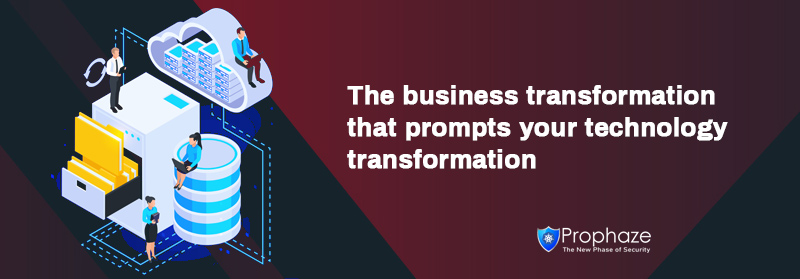What is the business transformation that is prompting your technology transformation?


What is the business transformation that is prompting your technology transformation?
Cloud is a transformative piece of technology that can put an immediate solution when a business opportunity is present. Cloud can help organizations diminish their technology footprint with speed and grace even if a business area is no longer relevant.
The public cloud has emerged to provide the flexibility and speed required to meet the demands on IT to support their business initiatives and growth. This path to successful cloud adoption is a fundamental shift in the entire business.
The cloud consists of a new set of tools and technologies where you have to change your controls and processes to conform to cloud operations. These can make sure that you offer the proper solutions within the budget and with appropriate admin authority.
According to Gartner, 17.5% worldwide public cloud services market has projected to grow in 2019 to a total of $214.3 billion, up from $182.4 billion in 2018. 19% spent on cloud consulting, implementation, migration, and managed services will increase to 28 percent by 2022.
Nowadays, organizations are trying their best to optimize the cost around managing and maintaining their infrastructure and applications. They need rapidly scalable infrastructure and services that need high-end computing. To gain high scalable services at a low cost, organizations start realizing the need to adopt the public cloud.
There is notable growth for public cloud providers like AWS, Microsoft Azure, and Google cloud platforms. The root causes for any organization to adopt a public cloud are flexibility, scalability, security, flexible pricing, and more. The pricing structure includes pay-as-you-go-service, maximum uptime, elastic IT-related capabilities, business agility, and different service models like IaaS, SaaS, PaaS. These can help customers control their costs while assuring reliable services.
Recent market researches reveal that web applications, containers, micro-services, general business applications, IoT, and large data lakes for analytics & research grounds are the primary targets for public cloud migration.
Some of the businesses with critical workloads, highly confidential data, and legacy applications are not willing to be migrated to the public cloud. Because they are considering the Hybrid & Multi-cloud model suits them the best. Organizations are evaluating the data, workloads, and applications that need to be on the public cloud will remain in on-premise infrastructure or private cloud.
The cloud migration strategy is a crucial plan with systematic and documented plans that an organization makes to move its data and applications to the cloud architecture from on-premises infrastructure. It is vital to validate the most efficient way to prioritize and migrate applications before going live because not every workload benefits from running on cloud-based infrastructure.
Cloud migration is something more than a technology transition. If the cloud migration is done correctly, it can modernize your complete organization infrastructure by creating new efficiencies and capabilities that accelerate the innovations throughout every business department.
Many of the organizations are realizing that their traditional, on-prem systems often cannot meet those demands. According to recent studies, business leaders already recognize the constraints of on-prem infrastructures in an environment where flexibility is at an absolute premium.
By migrating the entire IT infrastructure to the cloud, organizations can achieve digital transformation of their IT systems that can serve thousands of customers rather than the previous minimal number of clients.
Moving the applications to cloud computing must be done strategically and methodically. Existing enterprise applications must be examined thoroughly to identify which workloads can benefit most from early migration to the cloud. Cloud customers must consider the potential need for application redesign, cost of migration, performance and availability, longevity, the selection of locations, security & privacy requirements, and other regulatory requirements. Moreover, the relative vitality of these considerations may vary over time, and customers should think of them over the long term.
The enterprises are migrating their applications to the cloud either to prepare for future needs or to modernize their current IT Asset base. Several organizations are picking up a few mission-critical applications to the cloud and immediately realizing that other applications are also there that fit for the cloud. By 2022, the growth and market size of the cloud services industry at nearly four times the overall IT services growth.




